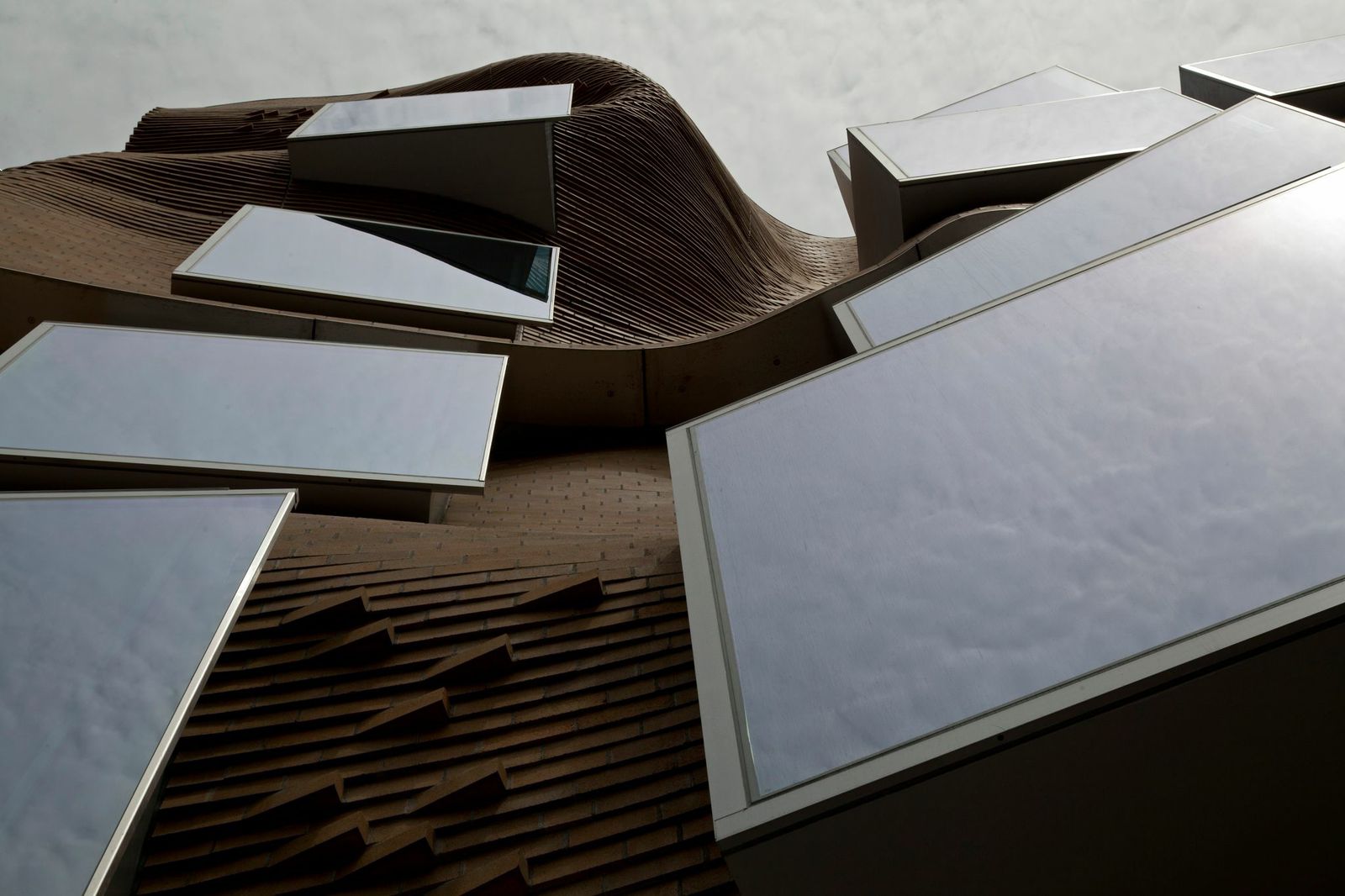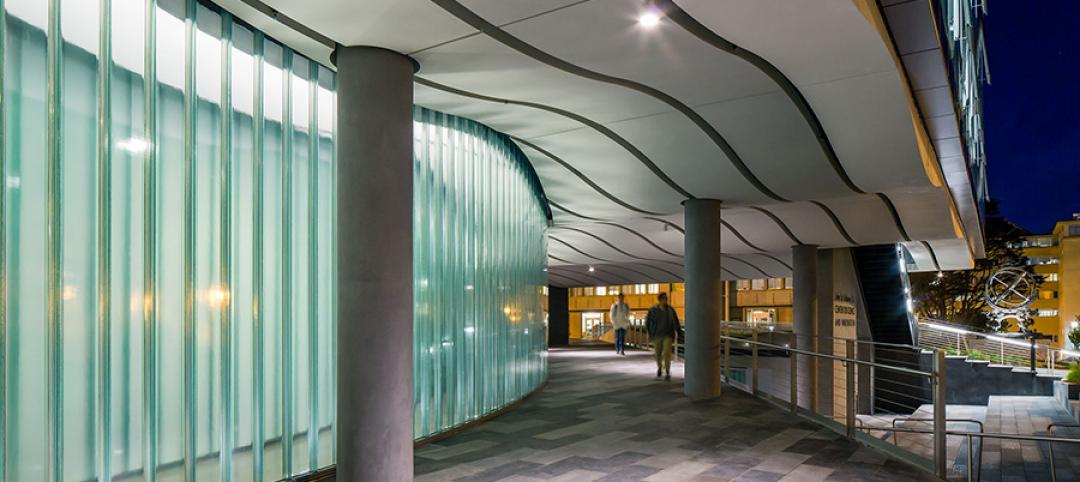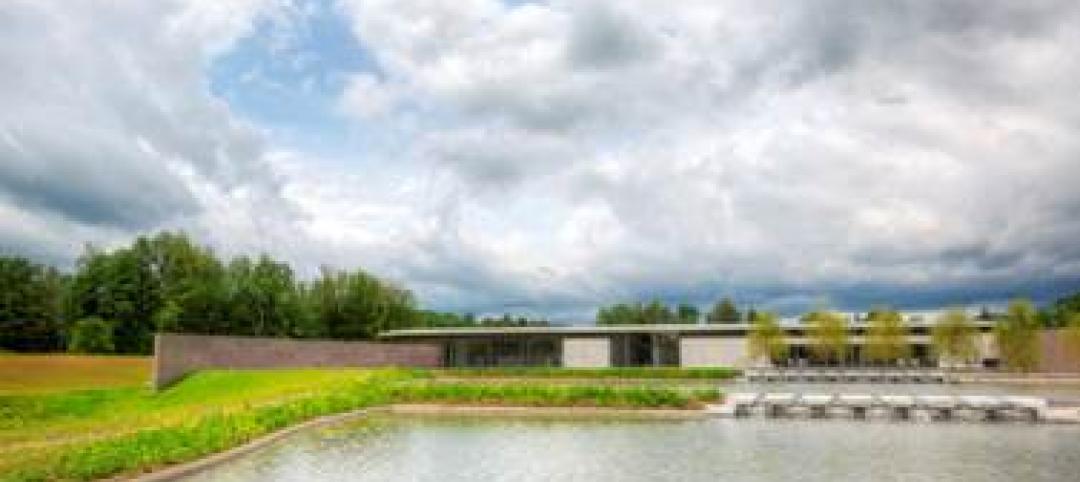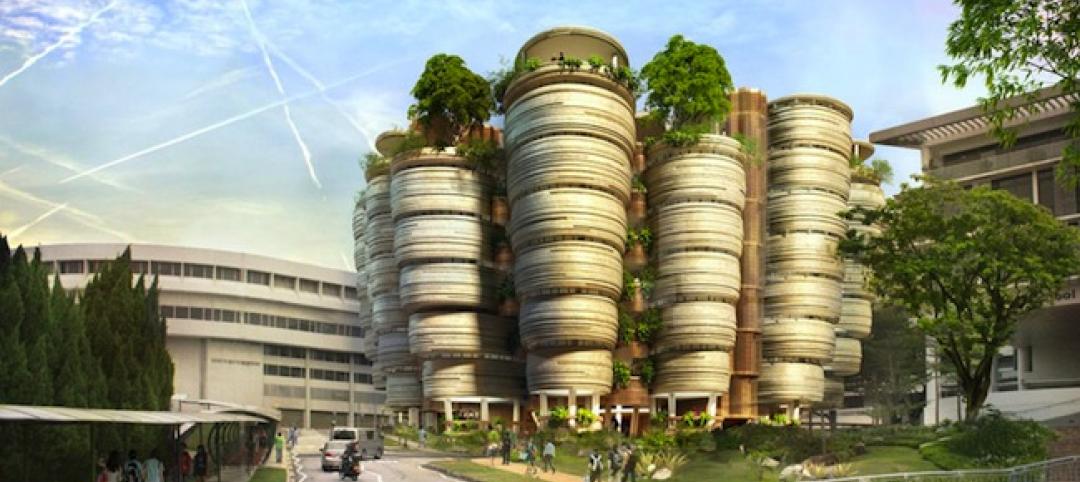Frank Gehry's first building in Australia, the Dr. Chau Chak Wing Building at the University of Technology, Sydney, has been completed. The building, primarily for use by the UTS business school, includes classrooms, a collaborative theater, a 240-seat auditorium, and a sculptural staircase made of stainless steel.
On the east and west sides of the building, there are different façades designed to represent the past and the present, in a way. The eastern façade is made of waved brick to reference the area's sandstone heritage, while the western façade is made of glass panels to remind viewers of the building's contemporary context, according to designboom.
The fluid brickwork of the eastern façade is comprised of 320,000 pieces made by hand. Some of the bricks protrude from the façade, creating a pattern within the structure's larger geometry. Five custom forms had to be made to achieve the fluid effect of the façade. The windows are gridded and project outward, presenting a contrast with the building's mass.
The name of the $180 million building comes from the Australian-Chinese businessman and philanthropist, Dr. Chau Chak Wing, who donated $20 million for its construction. Wing also donated $5 million for the creation of an endowment fund for Australia-China scholarships.

Photo credit: Andrew Worssam, courtesy UTS
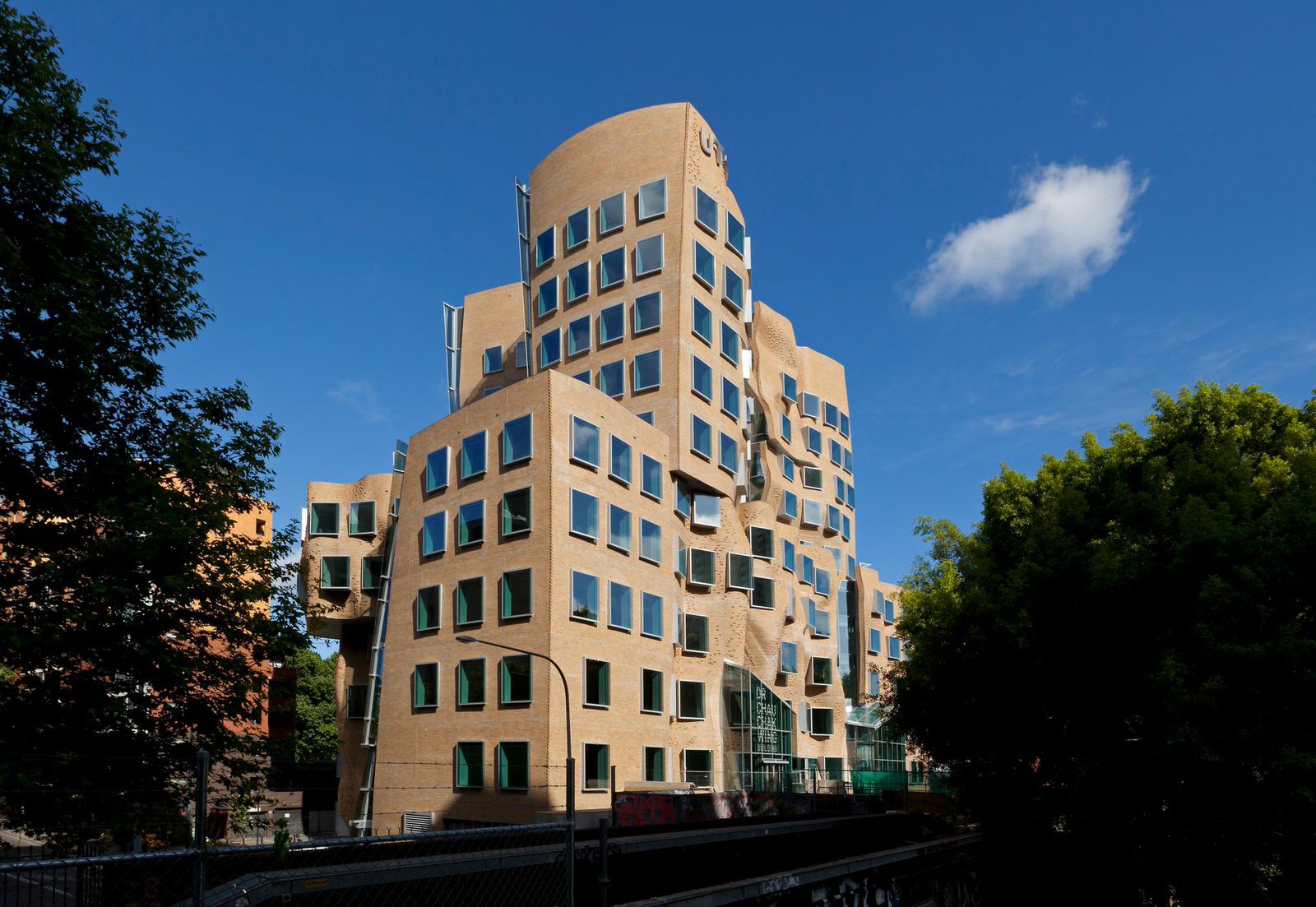
Photo credit: Andrew Worssam, courtesy UTS
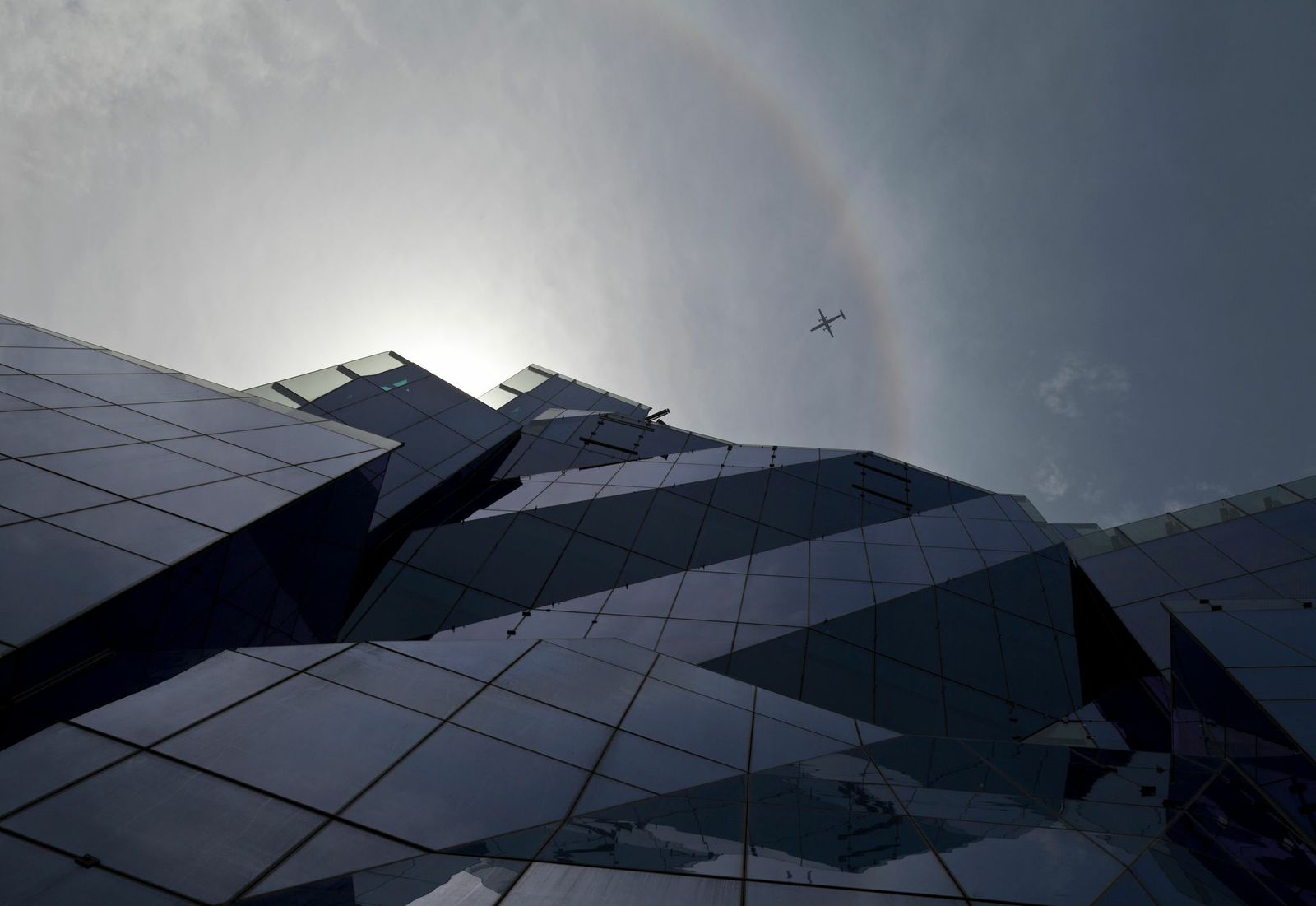
Photo credit: Andrew Worssam, courtesy UTS
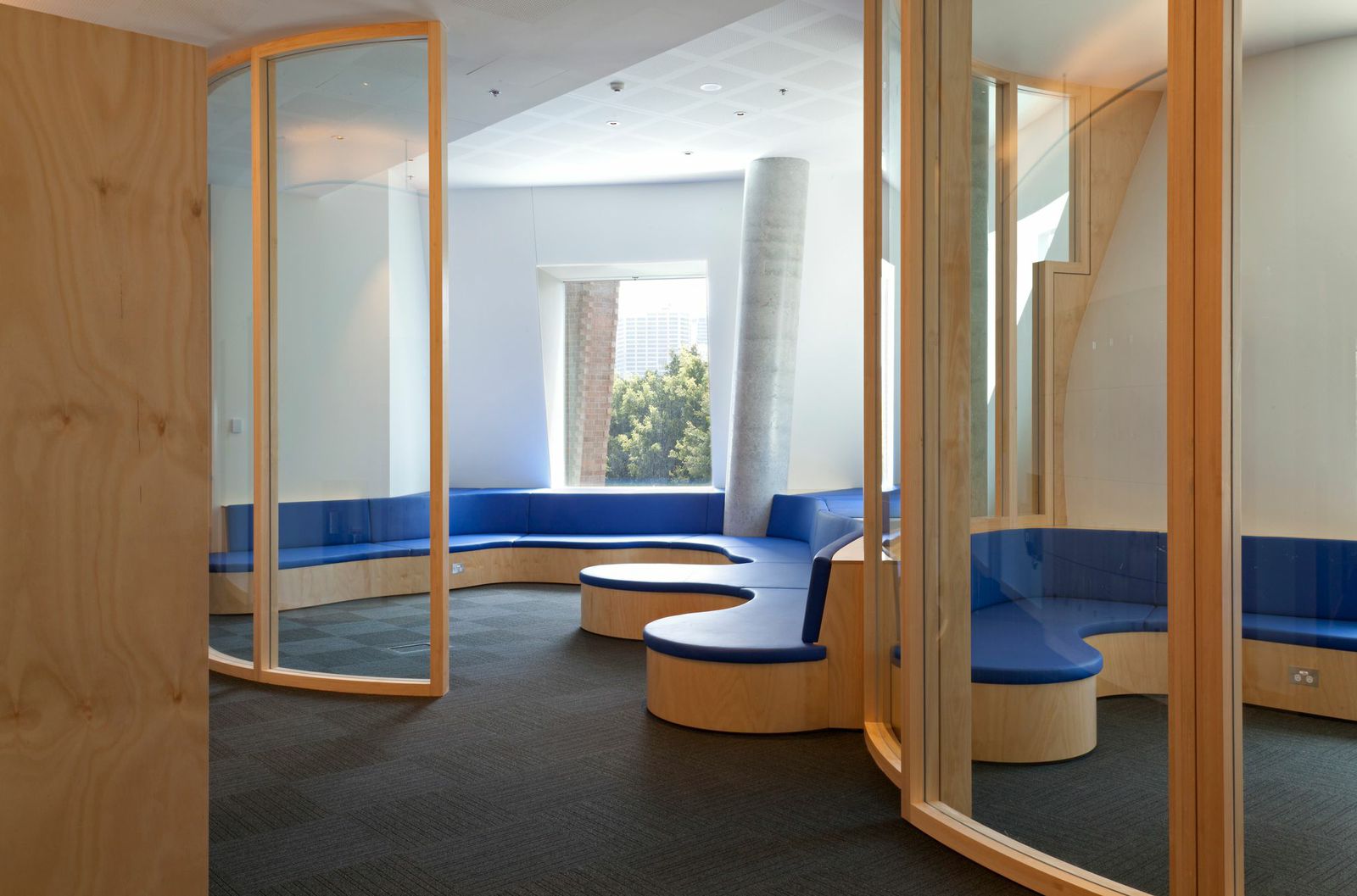
Photo credit: Andrew Worssam, courtesy UTS
Related Stories
Sponsored | | Jul 7, 2014
Channel glass illuminates science at the University of San Francisco
The University of San Francisco’s new John Lo Schiavo Center for Science and Innovation brings science to the forefront of academic life. Its glossy, three-story exterior invites students into the facility, and then flows sleekly down into the hillside where below-grade laboratories and classrooms make efficient use of space on the landlocked campus.
| Jul 3, 2014
Clark Institute to open newly-renovated campus designed by Tadao Ando, Selldorf Architects
Combining the talents of four noted architects, the project unites the new Clark Center, designed by Tadao Ando, with the renovated Museum Building and Manton Research Center, designed by Selldorf Architects.
| Jul 2, 2014
Emerging trends in commercial flooring
Rectangular tiles, digital graphic applications, the resurgence of terrazzo, and product transparency headline today’s commercial flooring trends.
| Jun 30, 2014
Research finds continued growth of design-build throughout United States
New research findings indicate that for the first time more than half of projects above $10 million are being completed through design-build project delivery.
| Jun 20, 2014
First look: Hive-like 'Learning Hub' to be built in Singapore
In a competition to design a "Learning Hub" for students at Nanyang University in Singapore, London-based firm Heatherwick studio has won with a rounded, hive-like design.
| Jun 18, 2014
Arup uses 3D printing to fabricate one-of-a-kind structural steel components
The firm's research shows that 3D printing has the potential to reduce costs, cut waste, and slash the carbon footprint of the construction sector.
| Jun 16, 2014
6 U.S. cities at the forefront of innovation districts
A new Brookings Institution study records the emergence of “competitive places that are also cool spaces.”
| Jun 12, 2014
Zaha Hadid's 'gravity defying' Issam Fares Institute opens in Beirut
The design builds upon the institute’s mission as a catalyst and connector between AUB, researchers and the global community.
| Jun 12, 2014
Tod Williams Billie Tsien Architects' design selected for new UCSC facility
The planned site is a natural landscape among redwood trees with views over Monterey Bay, a site that the architects have called “one of the most beautiful they have ever worked on.”
| Jun 12, 2014
Austrian university develops 'inflatable' concrete dome method
Constructing a concrete dome is a costly process, but this may change soon. A team from the Vienna University of Technology has developed a method that allows concrete domes to form with the use of air and steel cables instead of expensive, timber supporting structures.



